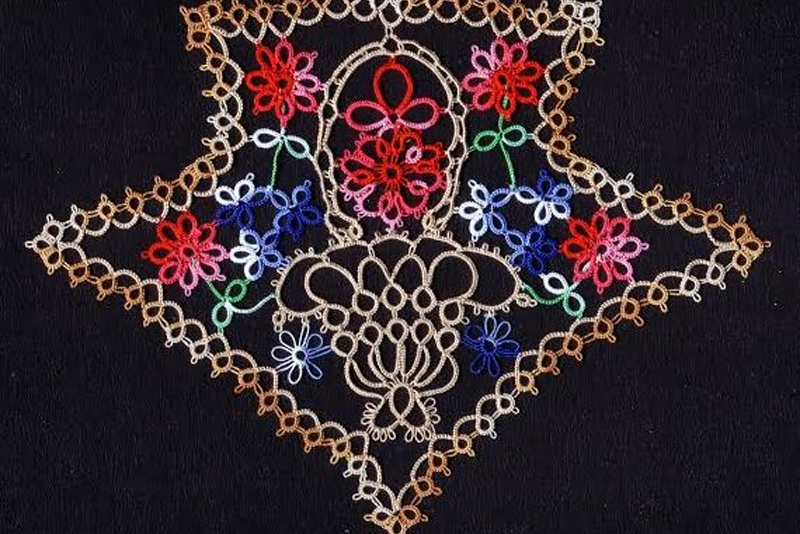This week Mexico celebrated "Dia de la Independencia." This celebrates their struggle for independence from 1810 to 1821. Any celebration means lots of color and costumes. This led me to investigate the state of lace and textiles in that country. I was surprised to find a website which documents and identifies textiles designs by the region or town. (http://www.mexicantextiles.com/flies/cooltextiles.html)
Not so with tatting patterns. Spanish Language Tatting Patterns such as those found in these familiar books, like most, could have been from any country.
 |  |  |  |
Frivolité; 1, 2, 3, 4 Centro de prod de Ediciones Realce Amelber(Spanish, French & English)
Having lived so long in Alaska, I have encountered these regional variations before. In Alaska the qiviut wool from the musk ox is hand knitted into wonderfully warm pieces. Each village or island has its own pattern. The pattern is often derived from something used in their culture, a design, a beading pattern, a totem.
And in China, scenes from rural life have been captured by wonderful blue and white embroidery. There is a great book on this by Margaret Lunt and Muriel L. Baker (1977,) BLUE and WHITE - The Cotton Embroideries of Rural China. And one scene is very familiar to tatters, the Blue Willow pattern which has been used in textiles and on china vases and dinner plates for a very long time.
The Blue Willow patterns tells the story of a young woman who was being forced to marry against her will and she refused. So her father locked her up on a tiny island with an apple tree. However, her devoted lover rescued her and they got away in a boat. The two birds in this pattern represent the lovers who "flew" away. | Pam Palmer prepared a series of tatting patterns featuring the charming Blue Willow story. |  |
Among tatters, a certain technique or tatted element can come to identify the tatter. Remember the classic rosette pattern from the Workbaskets? Those mark the work of Myrtle Hamilton. The wonderfully arranged and often colorful cluny patterns show off the work of Elise du Sud and Mimi Dillman. And can you see a block tatted critter without thinking of Martha Ess?
 |  |  |
There are still so many tatting patterns to tat...I'll look around me and see what inspiration for a design I can in the corn and bean fields of Illinois. Happy Tatting all!
Here's the latest article from the Tatting site at BellaOnline.com.Modernize Vintage Tatting Patterns Modernizing a vintage tatting pattern is easily defined as finding a path to tat the lace from center to outer row, or from row to row without cutting the thread. The fewer cuts of the thread, the fewer ends there would be to hide.
http://www.bellaonline.com/articles/art16387.asp
Please visit tatting.bellaonline.com for even more great content about Tatting. To participate in free, fun online discussions, this site has a community forum all about Tatting located here -
http://forums.bellaonline.com/ubbthreads.php?ubb=postlist&Board=39
I hope to hear from you sometime soon, either in the forum or in response to this email message. I thrive on your feedback! Have fun passing this message along to family and friends, because we all love free knowledge!
Georgia Seitz, Tatting Editor
http://tatting.bellaonline.com
One of hundreds of sites at BellaOnline.com







